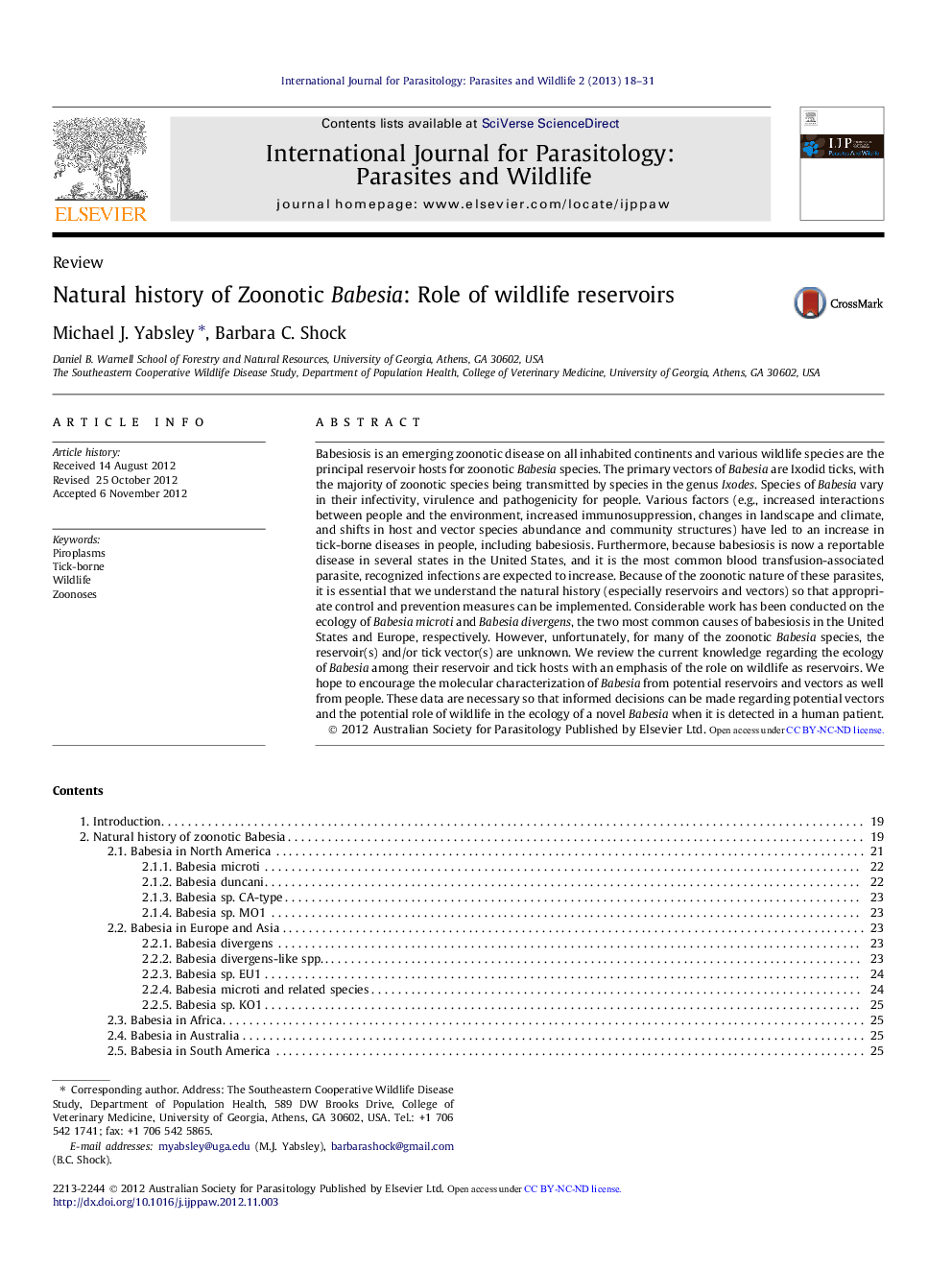| Article ID | Journal | Published Year | Pages | File Type |
|---|---|---|---|---|
| 2055271 | International Journal for Parasitology: Parasites and Wildlife | 2013 | 14 Pages |
Babesiosis is an emerging zoonotic disease on all inhabited continents and various wildlife species are the principal reservoir hosts for zoonotic Babesia species. The primary vectors of Babesia are Ixodid ticks, with the majority of zoonotic species being transmitted by species in the genus Ixodes. Species of Babesia vary in their infectivity, virulence and pathogenicity for people. Various factors (e.g., increased interactions between people and the environment, increased immunosuppression, changes in landscape and climate, and shifts in host and vector species abundance and community structures) have led to an increase in tick-borne diseases in people, including babesiosis. Furthermore, because babesiosis is now a reportable disease in several states in the United States, and it is the most common blood transfusion-associated parasite, recognized infections are expected to increase. Because of the zoonotic nature of these parasites, it is essential that we understand the natural history (especially reservoirs and vectors) so that appropriate control and prevention measures can be implemented. Considerable work has been conducted on the ecology of Babesia microti and Babesia divergens, the two most common causes of babesiosis in the United States and Europe, respectively. However, unfortunately, for many of the zoonotic Babesia species, the reservoir(s) and/or tick vector(s) are unknown. We review the current knowledge regarding the ecology of Babesia among their reservoir and tick hosts with an emphasis of the role on wildlife as reservoirs. We hope to encourage the molecular characterization of Babesia from potential reservoirs and vectors as well from people. These data are necessary so that informed decisions can be made regarding potential vectors and the potential role of wildlife in the ecology of a novel Babesia when it is detected in a human patient.
Graphical abstractFigure optionsDownload full-size imageDownload as PowerPoint slideHighlights► All zoonotic Babesia utilize mammals, primarily wildlife, as reservoirs. ► Reservoirs and/or ticks are unknown for many zoonotic Babesia species. ► Molecular characterization of Babesia from human patients is needed. ► Continued surveillance of potential reservoirs and ticks should be conducted.
